ECE faculty are MCubing to find answers – fast
The goal of MCubed is to jumpstart novel, high-risk and transformative research projects.
Thanks to the MCubed program, ECE faculty are teaming up with colleagues across the University of Michigan – from Epidemiology to Political Science, Ophthalmology to Psychiatry, Neurosurgery to Astronomy – to pursue new initiatives deemed to have major societal impact.
The MCubed program was established to minimize “the time between idea conception and successful research results by providing immediate startup funds for novel, high-risk and transformative research projects.”
Here are the MCubed projects that involve our faculty in Electrical and Computer Engineering:
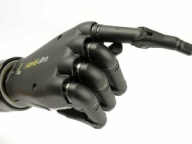
 Enlarge
Enlarge
Low power electronics for brain machine interface applications
Cindy Chestek, PI (Biomedical Engineering), Parag Patil (Neurosurgery), Michael Flynn(ECE)
Brain machine interfaces for the treatment of paralysis will require implantable devices that can record from hundreds of neural channels simultaneously. The team will attempt to dramatically lower the power consumption of the implant without suffering any measurable drop in signal quality. [more info]
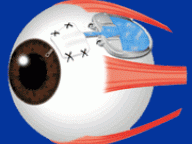
 Enlarge
Enlarge
A Novel Glaucoma Drainage Device
Joshua Stein, PI (Ophthalmology and Visual Sciences), Denise John (Ophthalmology and Visual Sciences), Yogesh Gianchandani(ECE)
Glaucoma is a sight-threatening condition which affects over 2 million Americans. This collaborative effort hopes to design a novel implant that can effectively lower the eye pressure and prevent worsening of glaucoma. [more info]

 Enlarge
Enlarge
Reconfigurable graphene beams for microscopy and micromanipulation
Anthony Grbic, PI (ECE), Hui Deng (Physics), John Hart (Mechanical Eng.)
Graphene supports strongly confined surface plasmons at infrared frequencies that can be tuned using a gate voltage. In this work, these surface plasmons will be used to generate reconfigurable, TM-polarized Bessel beams for microscopy applications and micromanipulation. [more info]
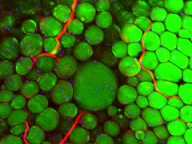
 Enlarge
Enlarge
High-resolution imaging of fat tissue metabolism
Tae-Hwa Chun, PI (Internal Medicine: Endocrinology, Diabetes & Metabolism), L. Jay Guo (ECE), Xueding Wang (Radiology)
This research aims to better understand glucose metabolism by combining cell biology with nanoscale bioengineering and photoacoustic microscopic technique. [more info]

 Enlarge
Enlarge
Big Data in astronomy: U-M astroinformatics research group
Chris Miller, PI (Astronomy), Jeff McMahon (Physics), Alfred Hero(ECE)
The team will attempt to tackle questions about our Universe that can best be answered by combining observations with advances in imaging analysis, non-parametric statistics, inference through machine learning, and high dimensional hypothesis testing and regression statistics. [more info]

 Enlarge
Enlarge
Virtual reality as a surrogate sensory environment for evaluation of human luminous environment
Mojtaba Navvab, PI (Architecture), Kwoon Wong (Ophthalmology & Visual Sciences), Pei-Cheng Ku(ECE)
The team will design and fabricate different types of LED-based light sources exhibiting different lighting characteristics and study the effects of these LED light sources within specially designed luminous environments. [more info]
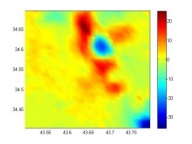
 Enlarge
Enlarge
Using satellite data to study how variation in energy access can lead to economic, political instability
Brian Min, PI (Political Science), Pauline Luong (Political Science), Rajesh Rao Nadakuditi (ECE)
The team will study how variations in energy access at the local level can lead to economic and political instability in a study region spanning North Africa, the Middle East, South Asia, and Central Asia. [more info]
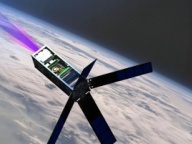
 Enlarge
Enlarge
COOL-Plasma: Efficient cold-plasma generation for applications in spacecraft propulsion and wound treatment
Juan Manuel Rivas, PI (ECE), Benjamin Longmier (Aerospace Eng.), Alexander Rickard (Epidemiology)
The team plans to to develop small and efficient cold plasma source devices for use in spacecraft propulsion systems and topical wound healing in a medical setting. [more info]
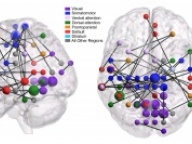
 Enlarge
Enlarge
Pattern classification for discovery of biomarkers of psychiatric disease
Chandra Sripada, PI (Psychiatry), Clay Scott (ECE), James Swain (Psychiatry, Child and Adolescent Section)
To better diagnose diseases such as ADHD, autism, and schizophrenia, the team will use advanced pattern classification methods derived from statistics and computer science to discover hidden patterns in diseased brains, patterns too subtle and distributed to be detected by human observers. [more info]
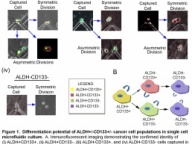
 Enlarge
Enlarge
ALDH inhibitors as cancer differentiation therapy
Ronald Buckanovich, PI (Medicine), Scott Larsen (Medicinal Chemistry), Euisik Yoon (ECE)
The team has identified novel ALDH inhibitors that deplete ovarian cancer stem cells, and will attempt to determine the mechanism by which this occurs, and the impact of these inhibitors on stem cell survival. [more info]
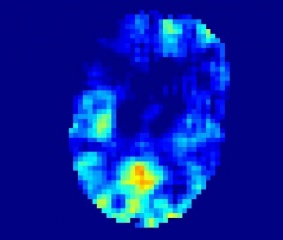
 Enlarge
Enlarge
Imaging Fleeting Thoughts
Jeffrey Fessler, with Biomedical Eng. and Math
This project will investigate mapping of temporal relationships between brain regions using a new class of ultrafast functional brain MRI using imaging methods based on sparse random sampling with physiologically relevant models to represent brain signals. [more info]
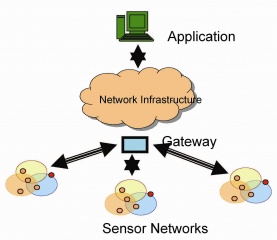
 Enlarge
Enlarge
National Infrastructure for Sensor Networking
Prabal Dutta and Mingyan Liu with School of Information
Sensor networks are increasingly critical to research in many disciplines. This project will explore the feasibility of building a national infrastructure to support sensor networking. [more info]

 Enlarge
Enlarge
Enabling Patient-Centered Care With Advanced Mobile Monitoring
Robert Dick, with Nursing and Pharmacy
Patients, families, and clinicians must work together to maintain optimal health status levels, intervening at the earliest possible moment when warranted. This team is developing a novel system for outpatient monitoring and early intervention. [more info]
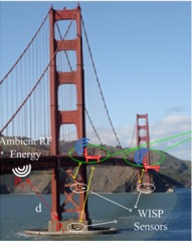
 Enlarge
Enlarge
Efficient Electromagnetic Energy Harvesting for Wireless Sensors
Amir Mortazawi (PI) with Civil & Env. Eng. and U-M Transportation Research Institute
This project focuses on the development of a new approach for designing efficient and wide-band energy harvesters capable of capturing stray EM energy from the environment. The proposed application is for use in long term autonomous low power wireless sensor nodes, especially to determine the health of civilian infrastructures like bridges and roads.

 Enlarge
Enlarge
Biophysical Manipulation of Functional Amyloids
Duncan Steel, with Molecular, Cellular and Dev. Biology
This collaboration will foster an understanding of how proteins adopt very ordered aggregates called amyloid. Amyloid formation has a long-standing link to human neurodegenerative diseases like Alzheimer’s and Parkinson’s. [more info]

 Enlarge
Enlarge
A Fast Surface Integral Equation Solver for the Radiative Transfer Equation
Eric Michielssen (PI), Kamal Sarabandi, John Schotland (Math)
This project will develop a surface integral equation (SIE) formalism for solving radiative transfer equations (RTEs) in piecewise homogeneous media. RTEs find applications in subjects ranging from astrophysics to remote sensing, and recently optical imaging in biological tissue. [more info]

 Enlarge
Enlarge
Neutron Detection for Cancer Therapy
Jamie Phillips with Nuclear Eng. and Rad. Sciences and Physics
Recent advances in nuclear detection capabilities, including new detection materials and readout electronics, promise to have an impact in the development of new cancer therapy treatments. This project relies on neutron and photon detection techniques to develop new instruments and algorithms that will be applied in cancer treatment facilities. [more info]
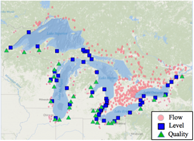
 Enlarge
Enlarge
A mathematical, scientific and measurement framework for the assessment of water balance and water quality
Laura Balzano with CEE and Graham Institute
This project will develop a comprehensive framework to enable the long-term, measurement and analysis of multiple water quality and water quantity stressors across massive regions. The Great Lakes watershed will be studied as a motivating example, where, by most metrics, water quality is in dire need of restoration. [more info]
 MENU
MENU 
